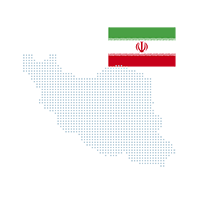Characteristics of extremist ideologies

Extremist ideologies are complex and vary depending on the political, social, religious or cultural context in which they develop. Characterised by a radical adherence to certain worldviews, these ideologies have some recurring characteristics that help define them.
First, extremist ideologies tend to adopt a dogmatic and absolutist approach to their beliefs. Extremists are firmly convinced of the veracity and superiority of their ideology, refusing to consider alternative or critical perspectives. This mental closure prevents them from being open to dialogue and mutual understanding, leading to a rigid and inflexible interpretation of reality.
In the world several countries are, to date, governed by extremist ideologies. Here some examples:
North Korea
 North Korea is governed by a totalitarian regime with a strong Juche ideology, which focuses on national self-sufficiency, isolation from the outside world and supremacy of the supreme leader. The country is characterised by extreme government control over citizens’ lives, with limited individual freedoms, media censorship and widespread human rights violations.
North Korea is governed by a totalitarian regime with a strong Juche ideology, which focuses on national self-sufficiency, isolation from the outside world and supremacy of the supreme leader. The country is characterised by extreme government control over citizens’ lives, with limited individual freedoms, media censorship and widespread human rights violations.
Saudi Arabia
 Saudi Arabia is governed by a system of absolute monarchy based on the strict interpretation of Sunni Islam known as Wahhabism. The country is characterised by strict observance of Islamic laws, with significant limitations on civil liberties, especially for women and religious minorities. The Saudi government is known for its lack of tolerance towards political criticism and its involvement in regional conflicts.
Saudi Arabia is governed by a system of absolute monarchy based on the strict interpretation of Sunni Islam known as Wahhabism. The country is characterised by strict observance of Islamic laws, with significant limitations on civil liberties, especially for women and religious minorities. The Saudi government is known for its lack of tolerance towards political criticism and its involvement in regional conflicts.
Iran
 Iran is a country governed by a theocratic regime based on Shiite Islam, led by a supreme religious leader. The country has legislation based on sharia and political decisions are influenced by religious doctrine. Iran has been criticised for human rights violations, media censorship and support for militant groups across the Middle East.
Iran is a country governed by a theocratic regime based on Shiite Islam, led by a supreme religious leader. The country has legislation based on sharia and political decisions are influenced by religious doctrine. Iran has been criticised for human rights violations, media censorship and support for militant groups across the Middle East.
Myanmar
 Myanmar, or Burma, has been ruled by a military regime for several decades, with periods of intermittent civilian rule. The country has faced serious human rights violations, including the persecution of ethnic minorities and the restriction of civil liberties. Despite the recent transition to a civilian government, Myanmar continues to fight for full democratisation and respect for human rights.
Myanmar, or Burma, has been ruled by a military regime for several decades, with periods of intermittent civilian rule. The country has faced serious human rights violations, including the persecution of ethnic minorities and the restriction of civil liberties. Despite the recent transition to a civilian government, Myanmar continues to fight for full democratisation and respect for human rights.
What about Europe? Can we really say that there are forms of extreme populism?
Populism characterised by a far-right ideology: The investigation categorised six instances of populist far-right parties that merge populism with nativism, which involves advocating for the concerns of indigenous citizens against migrants or ethnic minorities. Illustrations comprise Alternative for Germany, Danish People’s Party, the United Kingdom Independence Party, The League in Italy, the National Front in France, and the Spanish Vox. To some degree, these parties share nativist and xenophobic language and strongly oppose multiculturalism.
Populism characterised by a far-left ideology: The second group of populist parties encompasses three new anti-austerity far-left populist parties that share a Eurosceptic and anti-capitalist discourse. Examples encompass Unbowed France, Spanish Podemos, and the Greek Coalition of the Radical Left (SYRIZA).
Illiberal populism: This third group comprises four instances that exhibit significant illiberal characteristics. Three of them can be defined as post-communist populism: the Hungarian Fidesz, the Polish Law and Order, and the Bosnian Alliance of Independent Social Democrats. Although not a post-communist party, the Turkish Justice and Development Party (AKP) in Turkey displays similarities to those observed in post-communist countries.
Populism opposing the establishment: These parties adopt a strong anti-establishment populist stance. Illustrations include the Czech Action of Dissatisfied Citizens (ANO 2011), the Italian Five Star Movement, the Slovak We are Family-Boris Kollar, and the Lithuanian Party Order and Justice.
